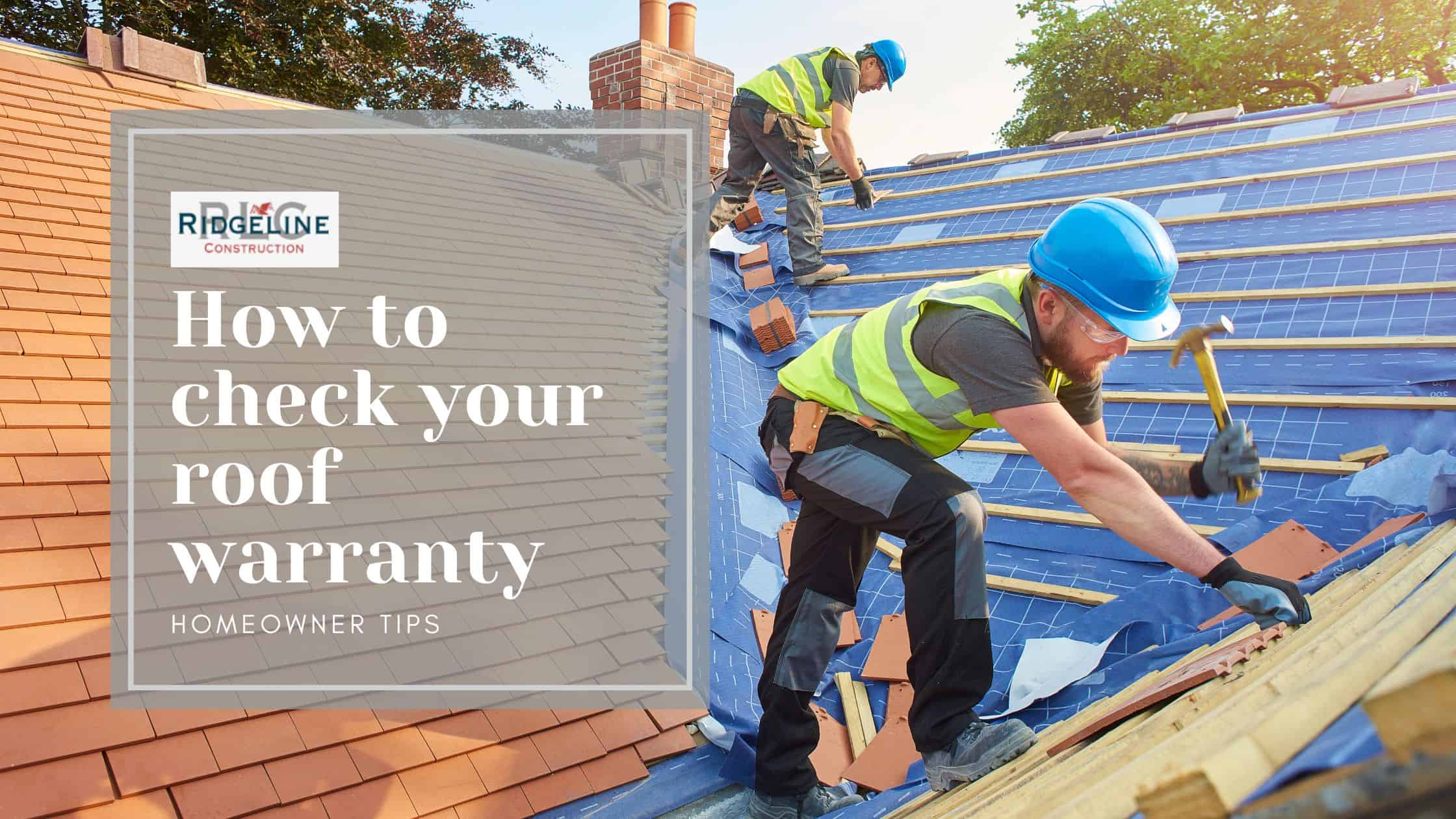Table of Contents
How to Read and Understand Your Roofing Warranty
When protecting your home, a roofing warranty is an important document. It can give you peace of mind that your roof is covered in any damage or defects. However, it’s essential to understand what your warranty covers and how to read and understand it.
First, you should know that there are two roofing warranties: manufacturer and contractor. Manufacturer warranties cover the materials used in the roofing system, while contractor warranties cover the labor and installation of the roof.
When reading your warranty, you should look for the following information:
• The length of the warranty: Most warranties are for a certain number of years, such as 10 or 20.
• The coverage: This will tell you what is covered by the warranty, such as materials, labor, and installation.
• The exclusions: This will tell you what is not covered by the warranty, such as damage caused by weather or improper installation.
• The transferability: This will tell you if the warranty can be transferred to a new owner if you sell your home.
• The contact information will tell you who to contact if you need to make a claim.
It’s also essential to keep your warranty safe and ensure you have all the necessary paperwork, such as receipts and invoices, in case you need to make a claim.
By understanding your roofing warranty, you can protect your roof in case of any damage or defects. Make sure to read and understand your warranty before signing it to know exactly what is covered and what is not.
What to Do if Your Roofing Warranty is Denied
If you have recently had roofing work done and your warranty claim has been denied, it can be a frustrating and confusing experience. However, you can take steps to ensure that your warranty claim is handled.
First, it is essential to understand why your warranty claim was denied. Warranty claims are often rejected because the roofing contractor did not correctly install the roofing materials or the warranty did not cover the materials used. If this is the case, you should contact the roofing contractor and ask for an explanation.
If the roofing contractor cannot explain, you should contact the manufacturer of the roofing materials. The manufacturer may be able to supply more information about why the warranty claim was denied.
You should contact your local Better Business Bureau (BBB) if the manufacturer cannot explain. The BBB can give information about the roofing contractor and the manufacturer and any complaints that have been filed against them.
If the BBB cannot provide an explanation, you should contact an attorney specializing in roofing warranties. An attorney can review the warranty and help you determine if the warranty was denied correctly.
Finally, if all else fails, you may need to file a lawsuit against the roofing contractor or manufacturer. This is a last resort, but it may be necessary if the warranty claim is not adequately addressed.
No matter the reason for the denial of your warranty claim, it is essential to take action to ensure your rights are protected. By following these steps, you can guarantee that your warranty claim is addressed correctly and that you receive the compensation you deserve.
How to File a Claim on Your Roofing Warranty
You may be eligible for a warranty if you have recently purchased a roofing system. A roofing warranty is a promise from the manufacturer that the roofing system will perform as expected for a certain period. If you experience any issues with your roofing system during the warranty period, you may be able to file a claim and receive compensation for repairs or replacement.
Filing a claim on your roofing warranty can be a complicated process. Still, it is essential to understand the steps involved to ensure you receive the compensation you are entitled to. Here are the steps you should take to file a claim on your roofing warranty:
1. Read the Warranty Carefully: It is essential to read the warranty carefully before you file a claim. Ensure you understand the terms and conditions of the warranty, including the coverage period, what is covered, and what is not.
2. Document the Problem: If you experience any issues with your roofing system, it is essential to document the problem. Take photos of the damage and keep receipts for repairs or replacement parts.
3. Contact the Manufacturer: Once you have documented the problem, contact the manufacturer to inform them of the issue. They will provide you with instructions on how to file a claim.
4. Submit the Claim: Follow the instructions provided by the manufacturer to submit the claim. Ensure to include all necessary documentation, such as photos and receipts.
5. Wait for a Response: Once you have submitted the claim, the manufacturer will review it and determine if you are eligible for compensation. They will then contact you with their decision.
Filing a claim on your roofing warranty can be a complicated process. Still, it is essential to understand the steps involved to ensure you receive the compensation you are entitled to. By following these steps, you can guarantee that your claim is handled correctly and that you accept the compensation you deserve.
Standard Exclusions in Roofing Warranties
Regarding roofing warranties, specific exclusions are standard across most warranties. It is essential to understand these exclusions to make an informed decision when selecting a roofing warranty.
1. Damage caused by natural disasters: Most roofing warranties do not cover damage caused by natural disasters such as hail, hurricanes, tornadoes, floods, and earthquakes.
2. Damage caused by improper installation: Roofing warranties typically do not cover damage caused by improper installation or maintenance. This includes damage caused by incorrect materials, incorrect installation techniques, or inadequate maintenance.
3. Damage caused by wear and tear: Roofing warranties typically do not cover damage caused by normal wear and tear. This includes damage caused by aging, weathering, and other environmental factors.
4. Damage caused by animals: Most roofing warranties do not cover damage caused by birds, rodents, or insects.
5. Damage caused by third-party contractors: Roofing warranties typically do not cover damage caused by third-party contractors such as electricians, plumbers, or HVAC technicians.
6. Damage caused by acts of God: Roofing warranties typically do not cover damage caused by acts of God, such as lightning strikes, hail, or windstorms.
It is essential to read the fine print of any roofing warranty before signing on the dotted line. Understanding the standard exclusions can help you make an informed decision and ensure you get the best roof coverage.

Tips for Maintaining Your Roofing Warranty
1. Follow the Manufacturer’s Instructions: Read and follow the manufacturer’s instructions for installing and maintaining your roofing system. This will help ensure that your roof is installed correctly and that you take the necessary steps to keep your warranty.
2. Regular Inspections: A qualified roof contractor inspects your roof regularly. This will help identify any potential problems before they become significant issues.
3. Clean Gutters: Keep your gutters clean and debris-free. Clogged gutters can cause water to back up and damage your roof.
4. Trim Trees: Trim any trees near your roof to prevent branches from rubbing against the roof and causing damage.
5. Repair Damage: If you notice any damage to your roof, make sure to have it repaired as soon as possible. This will help prevent further damage and keep your warranty intact.
6. Keep Records: Record all inspections, repairs, and maintenance performed on your roof. This will help you prove that you have taken the necessary steps to maintain your warranty.
7. Contact the Manufacturer: If you have any questions or concerns about your roofing system, contact the manufacturer directly. They can provide you with additional information and advice on maintaining your warranty.
In summary, checking your roofing warranty is essential in ensuring your roof is adequately protected. Understanding the terms and conditions of your warranty and its coverage is critical. Knowing what is covered and what is not can help you make informed decisions about your roofing needs. Also, keeping records of any repairs or replacements made to your roof is essential, as this can assist you in case of a warranty claim.
Ridgeline Construction offers high-quality roofing services and can help you navigate the process of maintaining your warranty. Our experienced team is knowledgeable about different types of warranties and can provide expert advice to ensure your roof remains protected. Contact us today for all your roofing needs.









